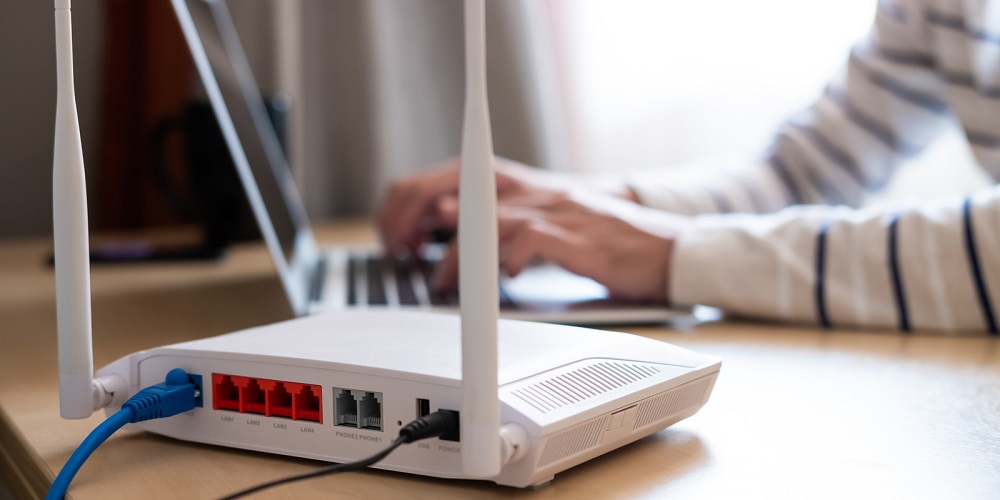
Have you previously been in the middle of a time-sensitive project that required the internet and suddenly lost connection? It’s a terrible experience, especially if you don’t have any backup. In such instances, most of us first start by hitting the power button on the router to switch it off and then back on. This occasionally cures the problem but may only help in certain circumstances. The best method to handle the Router issue is to conduct a thorough reboot for it to work correctly.
Reboot Router Reasons
It would be best to reboot your home network work router for several reasons.
1 – A reboot may increase internet speed.
2 – Rebooting helps clear any memory or CPU usage issues that are hurting the operation of your router.
3 – If you just installed a new router or modified your network work, a reboot may be required to effect the changes.
4 – A reboot may help stabilize your connection if you have frequent disconnects.
5 – It can clear any DNS cache issues if you are having difficulties connecting to particular websites or online services.
6 – If the router has been on for a long time, a reboot might help renew its performance.
7 – It can also help if you need help with your wireless sign.
To properly reboot your router, follow these steps.
Unplug Router From The Power Source

The first step in rebooting your router is removing it from the power supply and waiting at least 30 seconds before putting it back in. This will help reset the router and eliminate any potential problems. Next, remove the power cord from the router’s power input to disconnect it. When you remove the power cord, the router no longer receives power and turns off. After 30 seconds or longer, insert the power cord again to check whether your connection is back (it may take a little while for the router to reconnect to the internet). Then, proceed to the following step if it still has issues.
Reboot Using The Reset Button

To accomplish this, locate the reset button on the router. You may find it on the front or side of your router. The button is inside certain routers, so you’ll need a sharp item to press it, as seen below.

If you find the reset button, push and hold it for 30 seconds. It will reset your router to factory settings.
Sign In To Router’s Admin And Change The Password
Use the default login information to sign in to your router’s admin and change your password once you press and release the reset button. Well, the default username and password are often both “admin.” These details can be found in the handbook or on the back of your router, as illustrated below.

Reconnect to the internet and see whether it works. Now that your router is working, it should be OK. But, if you continue to have issues, you can proceed to the following steps.
Check Ethernet Cable
If you reboot the router and there is still no connection, the issue may be with the Ethernet cable. First, check for physical damage, fix it, and insert it correctly into the router. You may also try a different cable to see if it fixes the issue. Proceed to the following step if it still doesn’t work.
Move Router To Different Location
Relocating the router to a different position can help to fix your connection issues, as it can sometimes help to enhance signal strength and eliminate interference from other devices. For example, if you’ve a multi-story home, putting the router on the first level is ideal since this will help ensure the signal can reach all house sections. Moving it from an enclosed place, such as a cabinet, to a more open space will also help to boost the sign strength. If none of the above work, acquiring a new router is time.
Get New Router
When purchasing a Wi-Fi router for your home or workplace, some important factors must be considered. They include.
Speed – One of the most crucial factors to consider when purchasing a router. Check that the router you select gives the same speed as your ISP. This does not imply that your router should have the fastest feasible speed, but it should at least match the internet speed provided by your ISP.
Range – Another important issue to consider. Check that the router you select can cover the region you want.
Security – To secure your data, it should have superior security measures.
Support For Apps – Various apps help you handle your router efficiently. They give a graphical user interface for operating your router, including various functions to help solve problems and enhance your network. You should select a router that supports this.
When you acquire your new router, remember to use your old router instead of throwing it away!
Important Things To Consider When Doing Reboot
Consider the following before hitting the router reset button to reboot your router.
1 – Check that the router, not your computer or phone/tablet, is the device that has rebooted to prevent wasting your router’s time. Next, check if the internet works by connecting to a different device or using a different online browser.
2 – If your router supports firmware upgrades, try upgrading it to see if it works.
3 – Check for radio interference. If other devices in your home use the same frequency as your router, it might cause interference. If your connection is still having issues after rebooting, think about this.
4 – Check the lights on your router. It will display if the power or internet is on and can help you fix issues.
Conclusion:
The router is most likely to blame if your internet connection is problematic, especially if your ISP is dependable. A quick reboot will typically fix the problem and get you back online. If you follow the steps above, you can enjoy an uninterrupted internet connection since the reboot restores the settings and clears any faults that may have been creating problems with your internet connection. But, if the issue persists, you may need to contact your ISP for help or purchase a new router.



